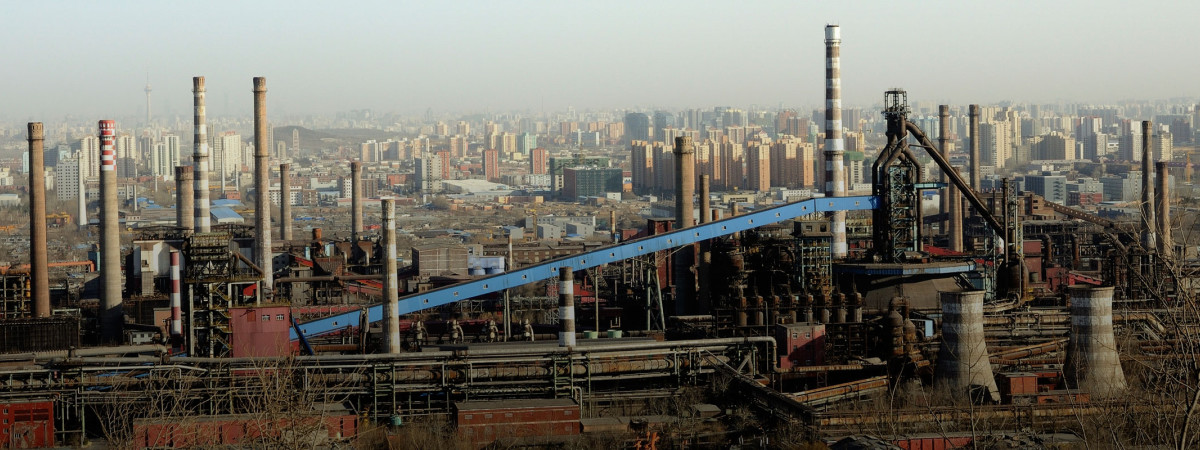
Authors
-
Edward Cameron
Former Managing Director, BSR
-
David Wei
Former Managing Director, Climate and Nature, BSR
-
Fengyuan Wang
Former Manager, BSR
China’s announcement today of how it plans to reduce its greenhouse gas (GHG) emissions represents the clearest signal to date that a major structural shift away from carbon-intensive development is underway in the world’s second-largest economy.
The direction outlined by the Chinese government—to peak the country’s carbon-dioxide emissions around 2030 or likely earlier—is ground-breaking, both in the scale of proposed emissions reductions, and when viewed within the wider trend of substantial GHG reductions pledged by major economies. According to a London School of Economics study, China’s greenhouse gas emissions will likely peak in 2025.
The message to business is clear: The building blocks of a low-carbon economy are being put in place.
In recent weeks, the United States announced plans to reduce GHG emissions by 26 to 28 percent below 2005 levels by 2025, and the European Union committed to at least 40 percent domestic reductions in GHG emissions by 2030 compared to 1990 levels.
Today, China joins this growing chorus of ambition. In addition to peaking the country’s carbon dioxide emissions, China plans to:
- Increase its non-fossil-fuel share of energy use to around 20 percent by 2030. China is also expected to include a cap on coal use in the 13th Five-Year Plan, which is scheduled for adoption in March 2016. Coal consumption dropped by 2.9 percent between 2013 and 2014, and there is increasing evidence it will decline further in 2015.
- Reduce the economy's carbon intensity by 60 to 65 percent from 2005 levels. China has already made great strides in decoupling emissions from economic growth by reducing carbon intensity by 34 percent from 2005 levels. Between 1975 and 2007, China reduced its carbon-dioxide emissions intensity by 87 percent in the transport sector through electrification and other improvements to rail infrastructure.
- Launch a national emissions-trading system by the end of 2016. China already has seven cap-and-trade pilots in its major cities and provinces, making it second only to the EU when it comes to the amount of regulated carbon emissions. A national Chinese emissions-trading system that includes a meaningful price on carbon will send a strong signal to investors and will shift trillions of renminbi into a low-carbon, clean, and prosperous economy.
China has a proven track record of meeting its commitments ahead of schedule. As a result, China should return in 2020 to update its commitments under the Paris agreement—and every five years after that—following the timeline of China's national Five-Year Plans. This will capture the real pace of innovation in the Chinese economy, which is the surest way to secure climate ambition and catalyze partnership from the private sector.
What China’s Announcement Means for Business
The private sector is key to delivering on this vision, and today’s announcement is likely to have far-reaching impacts on commercial interests in China. Companies operating in China—whether domestically owned, state owned, or multinational with supply chains in the country—will need to grapple with these new policies. This will put more pressure on high-emitting suppliers, raise public and industry awareness about the need for companies to act on climate, and affect commercial calculations, particularly for the energy and extractives industries, which have long counted on China as a significant consumer.
This announcement also opens huge opportunities for business. Each year, China adds roughly the total existing electricity capacity of a large U.S. state or a medium EU country. China will continue to improve energy efficiency and add significant new renewable energy capacity over the next several decades to serve economic development and increased user demand. China was the world’s biggest investor in renewable energy in 2013, channeling US$54.2 billion into the sector, and it’s likely these markets will expand even more, to the benefit of renewable energy and clean technology companies.
Major multinationals with suppliers in China are already joining collaborative platforms designed to increase renewable energy and reduce carbon intensity. The We Mean Business coalition contains platforms for business action to address issues including deforestation, energy efficiency, and carbon capture and storage. RE100, for example, helps companies switch to renewable power; already, more than 20 companies have committed to go “100 percent renewable.” These platforms are ready to welcome increased participation from Chinese companies.
China has long understood that climate change is a potential constraint to prosperity and security. Government studies estimate a decline of up to 37 percent in the production of wheat, rice, and corn, and a 20 percent decline in grain by the second half of the century based on current GHG trends. According to the IPCC, those same trends would have severe impacts on China’s water supply. In addition, the nation’s coastal zones, which are home to 60 percent of China’s 1.2 billion population, will be exposed to more intense and frequent extreme weather events such as cyclones and tropical storms, with significant implications for homes, jobs, infrastructure, and the national economy.
Today’s announcement illustrates that China understands climate risks and recognizes the importance of a collective response to global climate change. It is further evidence that the deep decarbonization of the global economy called for recently by the G7 is gathering momentum.
Hear more about China's INDC in an interview with Cameron by CCTV America.
Let’s talk about how BSR can help you to transform your business and achieve your sustainability goals.